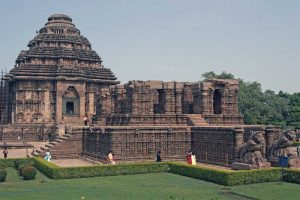 TO BE SPECIFIC
TO BE SPECIFIC
By Ken Lambert, CSI, CSL
While recently reading an article on the 50 most ‘iconic’ buildings in the world, I found it very interesting the majority of these structures are of masonry construction. The list includes:
- Hagia Sophia;
- Taj Mahal;
- Chateau de Chenonceau;
- Acropolis of Athens;
- Westminster Abbey;
- Konark Sun Tower; and
- The White House.
Why are so many of the world’s most significant buildings built with masonry? There are many reasons, and the most pertinent one being that prior to 1860, architects and constructors had two options—masonry and wood. Also, in some areas of the world, wood was not a viable option.

Photo © BigStockPhoto.com
Some of these buildings date back to 80 AD (Coliseum) and 450 BC (Acropolis), which is amazing, and proves the long-term durability of masonry components—a key factor of which is fire-resistance.
However, masonry construction was preferred for more than utilitarian and practical aspects. Masonry walls/exteriors can be stunning in their aesthetic (e.g. Hagia Sophia or Musee d’Orsay).
Of course, there are some supertall structures, especially constructed in the last century, that have benefitted from different materials. However, there are not many opportunities to build an 828-m (2717-ft) skyscraper (Burj Khalifa) or even a 305-m (1000-ft) one. The truth is that the overwhelming majority of real estate in the United States does not allow for buildings that are over 36 m (120 ft) tall.
One of the arguments against (structural) masonry is it cannot be built high enough to be relevant in 2020. This is not entirely true; sound engineering and design can allot for structural masonry walls up to 11 stories.
In fact, the “Anaconda Stack,” a freestanding masonry structure, is 178 m (584 ft) tall.
Some others will claim masonry construction is expensive. Again, that depends on the details and the specific project parameters. Masonry façades/veneers are less expensive than a metal or glass panel curtain wall.
In our collective rush and excitement over some of the newer building products and assemblies, perhaps we (architects/engineers/builders) have not given due consideration to the variety of masonry options available. It will not work for every building, partly because of a specific desired aesthetic or due to extreme heights, but masonry construction has stood the test of time.*
*This article is adapted from a blog by this author that first appeared on the CSI website.
Ken Lambert, CSI, is the director of industry development and technical services for the International Masonry Institute. He can be reached at klambert@imiweb.org.




